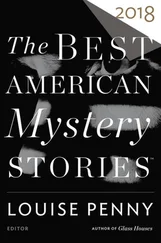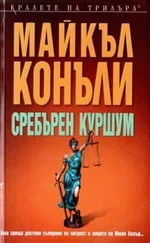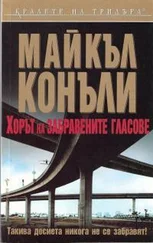In the morning Bosch ate breakfast at the counter at the Horseless Carriage, a diner located in the center of the vast Ford dealership in Van Nuys. It would only be a few miles from there to San Fernando and he had grown tired of eating the free breakfast burritos dropped off in the war room each morning. The Horseless had a fifties feel to it and was a lasting reminder of the population and expansion boom that swept the Valley after World War II. The car became king and Van Nuys was an auto-buying mecca, with dealerships lined up side by side and offering coffee shops and restaurants as draws to their customers.
Bosch ordered the French toast and watched the video he had been texted the night before on the burner phone he had bought to communicate with Lucia Soto. The video had come from a strange number, which he assumed belonged to a burner Soto was now using herself.
The video was Tapscott’s recording of the opening of the evidence box in the Danielle Skyler case. Bosch had watched it repeatedly the night before until he was too tired to keep his eyes open, but no matter how many times he viewed it, he could not figure out how the evidence box had been tampered with. The old and yellowed evidence labels were clearly intact as the box was presented to the camera and then cut open by Soto.
This continually agitated Bosch, because he knew there was a kink in the line somewhere between property control and the lab table where Lucas John Olmer’s DNA was found on Skyler’s clothing. If he started with the bedrock knowledge that Olmer’s DNA had been planted, then he had to figure out two things. One was how DNA from a man who died two years earlier had been procured in the first place, and the other was how it had been planted on the clothing contained in a sealed evidence box.
The first question had been answered — to Bosch’s satisfaction, at least — the night before, after Edgar left and he finally got the chance to review the Borders investigative file for a second time. This time, he paid careful attention to the file within the file — the records from Olmer’s prosecution and conviction on multiple rape charges in 1998. In his first swing through the records Bosch had paid closer attention to the investigative side of the case, exhibiting a detective’s bias that a case was put together during the investigation and that the prosecution was only the strategic revelation of the accumulated facts and evidence to the jury. Therefore, he believed, anything in the prosecution files would already have been covered in the investigative files.
Bosch learned how wrong he had been about this mind-set when he read through a sheaf of motions and countermotions filed by both the prosecution and defense. Most were boilerplate legal arguments: motions to suppress evidence or testimony made by the prosecution or defense. Then Bosch came across a defense motion stating that it was Olmer’s intention at trial to challenge the DNA evidence in the case. The motion asked the judge to order the state to provide the defense with a portion of the genetic evidence collected during the investigation so that independent analysis could take place. The motion was not challenged by the state, and Judge Richard Pittman ordered the District Attorney’s Office to split the genetic material with the defense.
The defense motion had been written by Olmer’s attorney, Lance Cronyn. It was a routine pretrial move, but what drew Bosch’s attention was the witness list submitted by the defense at the start of the trial. There were only five witnesses on the list and after each name, there was a summary of who the person was and what they would testify to. None of the five were chemists or forensic specialists. This told Bosch that during the trial, Cronyn did not put forth alternate DNA findings, as the motion filed earlier had suggested. He had gone in another direction, which could have been anything from claiming the sex was consensual to hammering at the state’s own DNA collection protocol and analysis. Whatever it was, it didn’t work. Olmer went down on all charges and was shipped off to prison. And there was no record in the file of what happened to the genetic material signed over to his lawyer by the judge.
Bosch knew that the DA’s Office should have requested the return of the material after the trial, but there was nothing in the records to indicate this had been done. Olmer was convicted and sent away on a sentence he couldn’t possibly outlive. The reality, Bosch knew, was that institutional entropy probably took over. Prosecutors and investigators moved on to other cases and trials. The missing DNA was unaccounted for, and therefore it could have been the source of the genetic material found on Danielle Skyler’s pajamas. Proving it, though, was another matter, especially when Bosch could not figure out how that microdot of DNA got there.
Still, for the moment, he had what was certainly a crack in the facade of a seemingly solid case for wrongful conviction. There was DNA unaccounted for and the defense lawyer who moved between the two cases in question may have had access to it.
He pushed his plate away and checked his watch. It was seven forty and time to get to the war room. He stood up, left a twenty on the counter, and headed out to his car. He stayed on surface streets, taking Roscoe over to Laurel Canyon and then heading up. Along the way he took a call from Mickey Haller.
“Funny, I was going to call you,” Bosch said.
“Oh, yeah?” Haller said. “About what?”
“I’ve decided I definitely want to engage your services. I want to come in as a third party at the hearing next week and oppose the release of Preston Borders. Whatever that takes in legal terms.”
“All right. We can do that. You want any media on it? This is going to be an unusual hearing with a retired detective going up against the D.A. It’s a good story.”
“Not yet. It’s going to get ugly when it comes up that Borders claims I planted evidence and the D.A. apparently agrees.”
“What the fuck?”
“Yeah, I’ve been through the whole file. Borders claims that I planted the key evidence — the sea-horse pendant — in his apartment. Accusing me is the only way to sell this.”
“Did he offer any proof of this?”
“No, but he doesn’t have to. If the DNA points to a convicted rapist, then the only plausible evidence for Borders being in possession of the pendant is that it was planted.”
“Okay, understood. You’re right, this is going to get down and dirty, and I see why you want to keep the media out of it if possible. But now the big question: Whaddaya got that knocks down this house of cards?”
“I’m only halfway there. I know where and how they could’ve gotten Olmer’s DNA. I just need to find out how they were then able to salt the evidence with it.”
“Sounds like you’ve done the easy part, if you ask me.”
“I’m working on the hard part. Is that why you called? To encourage me?”
“No, actually I’ve got a little gift for you.”
“What’s that?”
Bosch was now off of Laurel Canyon and cruising up Brand Boulevard and passing the “Welcome to San Fernando” sign.
“Well, when you first told me about this, the name Preston Borders rang a bell. I remembered it but I couldn’t place it. I was in law school at Southwestern and of course I didn’t know about you at the time. Anyway, I used to go to the Criminal Courts Building between classes and sit in courtrooms, watch defense lawyers work.”
“Never interested in how prosecutors worked?”
“Not really. Not with my father — our father — having been a defense attorney. The point is, I’m pretty sure I watched some of the Borders trial, and that would have put you and me in the same room without knowing each other thirty years ago. I thought that was sort of neat.”
Читать дальше
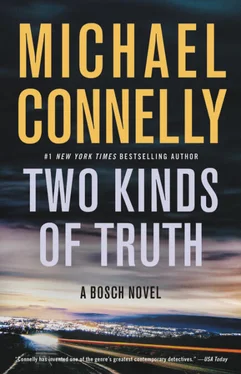





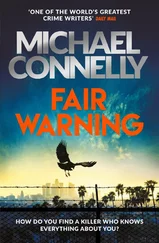
![Майкл Коннелли - The Night Fire [Harry Bosch - 22]](/books/405630/majkl-konnelli-the-night-fire-harry-bosch-22-thumb.webp)

